- Home
- Peter F. Hamilton
The Dreaming Page 4
The Dreaming Read online
Page 4
Aaron’s taxi dropped him at the arrivals pad in the centre. He had a credit coin in his pocket, which activated to his DNA and paid for the ride. There was a credit code loaded in a macrocellular storage lacuna which he could have used, but the coin made the ride harder to trace. Not impossible by any means, just taking it out of reach of the ordinary citizen. As the taxi took off he glanced up at the tall monochromatic walls fencing him in, feeling unnervingly exposed.
“Am I registered here?” he asked his u-shadow.
“Yes. Room 3088. A penthouse suite.”
“I see.” He turned and looked directly at the penthouse’s balcony. He’d known its location automatically. “And can I afford that?”
“Yes. The penthouse costs 1500 Ellezelin pounds per night. Your credit coin has a limit of five million Ellezelin pounds a month.”
“A month?”
“Yes.”
“Paid by whom?”
“The coin is supported by a Central Augusta Bank account. The account details are secure.”
“And my personal credit code?”
“The same.”
Aaron walked into the lobby. “Nice to be rich,” he told himself.
***
The penthouse was five rooms and a small private swimming pool. As soon as Aaron walked into the main lounge he checked himself out in the mirror. A face older than the norm, approaching thirty, possessing short black hair and (oddly) eyes with a hint of purple in their grey irises. Slightly oriental features, but with skin that was rough, and a dark stubble shadow.
Yep, that’s me.
Which instinctive response was reassuring, but still didn’t give any clues by way of identity.
He settled into a broad armchair which faced an external window, and turned up the opacity to stare out across the night time city towards the invisible heart which Inigo had built. There was a lot of information in those mock-alien structures which would help him find his quarry. Not the kind of data stored in electronic files; if it was that easy Inigo would have been found by now. No, the information he needed was personal, which brought some unique access problems for someone like him, an unbeliever.
He ordered room service. The hotel was pretentious enough to employ human chefs. When the food arrived he could appreciate the subtleties of its preparation, there was a definite difference to culinary unit produce. He sat in the big chair, watching the city as he ate. Any route in to the senior Clerics and Councillors wouldn’t be easy, he realized. But then, this Pilgrimage had presented him with a fairly unique opportunity. If they were going to fly into the Void, they’d need ships. It gave him an easy enough cover. That just left the problem of who to try and cultivate.
His u-shadow produced an extensive list of senior Clerics, providing him with gossip about who was allied with Ethan and who, post-election, was going to be scrubbing Council toilets for the next few decades.
It took him half the night, but the name was there. It was even featured on the city news web as Ethan began reorganizing Living Dream’s hierarchy to suit his own policy. Not obvious, but it had a lot of potential: Corrie-Lyn.
***
The courier case arrived at Troblum’s apartment an hour before he was due to make his presentation to the Navy review panel. He wrapped a cloak round himself and walked out to the glass lift in the lobby as the emerald fabric adjusted itself to his bulk. Ancient mechanical systems whirred and clanked as the lift slid smoothly downwards. They weren’t totally original, of course, technically the whole building dated back over one thousand three hundred and fifty years. During that time there had been a lot of refurbishment and restoration work. Then five hundred years ago a stabilizer field generator was installed, which maintained the molecular bonds inside all the antique bricks, girders, and composite sheets comprising the main body of the building. Essentially, as long as there was power to the generator, entropy was held at arm’s length.
Troblum had managed to acquire custodianship over a hundred years ago, following a somewhat obsessional twenty-seven year campaign. Nobody owned property on Arevalo any more, it was a Higher world, part of the Central Commonwealth—back when the building had been put up they called it phase one space. Persuading the previous tenants to leave had taken up all his Energy and Mass Allocation for years, as well as his meagre social skills. He had used mediator councillors, lawyers, historical restitution experts, and even had to launch an appeal against Daroca City Council who managed the stabilizer generator. During the campaign he’d acquired an unexpected ally which had probably helped swing the whole thing in his favour. Whatever the means, the outcome was that he now had undisputed occupancy rights for the whole building. No one else lived in it, and very few had ever been invited in.
The lift stopped at the entrance hall. Troblum walked past the empty concierge desk to the tall door of stained glass. Outside, the courier case was hovering a metre and a half above the pavement, a dull metal box with transport certificates glowing pink on one end, and shielded against field scans. His u-shadow confirmed the contents and directed it into the hall, where it landed on his trolley. The base opened and deposited the package, a fat silvered cylinder half a metre long. Troblum kept the door open until the case departed, then closed it. Privacy shielding came up around the entrance hall and he walked back into the lift. The trolley followed obediently.
Originally, the building had been a factory, which gave each of the five floors very tall ceilings. Then, as was the way of things in those early days of the Commonwealth, the city expanded and prospered, pushing industry out of the old centre. The factory had been converted into high-class apartments. One of the two penthouse loft apartments which took up the entire fifth floor had been purchased by the Halgarth Dynasty as part of their massive property portfolio on Arevalo. The other apartments had all been restored to a reasonable approximation of their layout and décor in 2380, but Troblum had concentrated his formidable energies on the Halgarth one, where he now lived.
In order to get it as near perfect as possible he had extracted both architect and interior designer plans from the city’s deep archive. Those had been complemented by some equally ancient visual recordings from the Michelangelo news show of that era. But his main source of detail had been the forensic scans from the Serious Crimes Directorate which he’d obtained direct from ANA. After combining the data, he had spent five years painstakingly recrafting the extravagant vintage décor; the end result of which gave him three en suite bedrooms and a large open-plan lounge which was separated from a kitchen section by a marble-topped breakfast bar. A window wall had a balcony on the other side, providing a grand view out across the Caspe River.
When the City Council’s historical maintenance officer made her final review of the project she’d been delighted with the outcome, but the reason for Troblum’s dedication completely eluded her. He’d expected nothing else, her field was the building itself. What had gone on inside at the time of the Starflyer War was his area of expertise. He would never use the word obsession, but that whole episode had become a lot more than just a hobby to him. One day he was determined he would publish the definitive history of the War.
The penthouse door opened for him. Solidos of the three girls were sitting on the blue-leather settee up by the window wall. Catriona Saleeb was dressed in a red and gold robe, its belt tied loosely so that her silk underwear was visible. Long curly black hair tumbled chaotically over her shoulders as she tossed her head. She was the smallest of the three, the solido’s animation software holding her image as a bubbly twenty-one-year-old, carefree and eager. Leaning up against her, sipping tea from a big cup was Trisha Marina Halgarth. Her dark heart-shaped face had small dark-green butterfly wing OCtattoos flowing back from each hazel eye, the antique technology undulating slowly in response to each facial motion. Lastly, and sitting just apart from the other two, was Isabella Halgarth. She was a tall blonde, with long straight hair gathered into a single tail. The fluffy white sweater she wore was a great deal
more tantalizing that it strictly ought to have been, riding high above her midriff, while her jeans were little more than an outer layer of blue skin running down long athletic legs. Her face had high cheekbones, giving her an aristocratic appearance that was backed up with an attitude of cool distain. While her two friends called out eager hellos to Troblum, she merely acknowledged him with a simple nod.
With a regretful sigh, Troblum told his u-shadow to isolate the girls. They’d been his companions for fifty years, he enjoyed their company a great deal more than any real human. And they helped anchor him in the era he so loved. Unfortunately, he couldn’t afford distractions right now, however delightful. It had taken him decades to refine the animation programs and bestow valid I-sentient personalities to each solido. The three of them had shared the apartment during the Starflyer War, becoming involved in a famous disinformation sting by the Starflyer. Isabella herself had been one of the alien’s most effective agents operating inside the Commonwealth, seducing high ranking politicians and officials, and subtly manipulating them. For a while after the War, to be Isabella-ed was a Commonwealth-wide phrase meaning to be screwed over. But that infamy had faded eventually. Even among people who routinely lived for over five hundred years, events lost their potency and relevance. Today the Starflyer War was simply one of those formative incidents at the start of the Commonwealth, like Ozzie and Nigel, the Hive, the Endeavour’s circumnavigation, and cracking the Planters’ nano-tech. When he was younger, Troblum certainly hadn’t been interested; then purely by chance he discovered he was descended from someone called Mark Vernon who apparently played a vital role in the War. He’d started to casually research his ancestor, wanting nothing more than a few details, to learn a little chunk of family background. That was a hundred and eighty years ago, and he was still as fascinated by the whole Starflyer War now as he had been when he opened those first files on the period.
The girls turned away from Troblum and the trolley that followed him in, chattering away brightly among themselves. He looked down at the cylinder as it turned transparent. Inside it contained a strut of metal a hundred and fifteen centimetres long; at one end there was a node of plastic where the frayed ends of fibre-optic cable stuck out like a straggly tail. The surface was tarnished and pocked, it was also kinked in the middle, as if something had struck it. Troblum unlocked the end of the cylinder, ignoring the hiss of gas as the protective argon spilled out. There was nothing he could do to stop his hands trembling as he slid the strut out; nor was there anything to be done about his throat muscles tightening. Then he was holding the strut up, actually witnessing the texture of its worn surface against his own skin. He smiled down on it the way a Natural man would regarded his newborn child. Subcutaneous sensors enriching his fingers combined with his Higher field-scan function to run a detailed analysis. The strut was an aluminium-titanium alloy, with a specific hydrocarbon chain reinforcement; it was also two thousand four hundred years old. He was holding in his own hands a piece of the Marie Celeste, the Starflyer’s ship.
After a long moment he put the strut back into the cylinder, and ran the atmospheric purge, sealing it back in argon. He would never physically hold it again, it was too precious for that. It would go into the other apartment where he kept his collection of memorabilia; a small specialist stabilizer field generator would maintain its molecular structure down the centuries. As was fitting.
Troblum acknowledged the authenticity of the strut and authorized his quasi-legal bank account on Wessex to pay the final instalment to the black-market supplier on Far Away who had acquired the item for him. It wasn’t that having cash funds was illegal for a Higher, but Higher culture was based on the tenet of individuals being mature and intelligent enough to accept responsibility for themselves and acting within the agreed parameters of societal norm. I am government, was the culture’s fundamental political kernel. However there was a lot of flexibility within those strictures. Quiet methods of converting a Higher citizen’s Energy and Mass Allocation, the so-called Central Dollar, to actual hard cash acceptable on the External Worlds were well established for those who felt they needed such an option. EMA didn’t qualify as money in the traditional sense, it was simply a way of regulating Higher citizen activity, preventing excessive or unreasonable demands being placed on communal resources, of whatever nature, by an individual.
As the trolley headed back out of the apartment, Troblum hurried to his bedroom. He barely had time to shower and put on a toga suit before he was due to leave. The glass lift took him down to the basement garage where his regrav capsule was parked. It was an old model, dating back two centuries, a worn chrome-purple in colour and longer than modern versions, with the forward bodywork stretching out like the nose-cone of some External World aircraft. He clambered in, taking up over half of the front bench which was designed to hold three people. The capsule glided out of the garage and tipped up to join the traffic stream overhead. Ageing internal compensators could barely cope with such a steep angle, so Troblum was pressed back into the cushioning as they ascended.
The centre of Daroca was a pleasing blend of modern structures with their smooth pinnacle geometries, pretty or substantial historical buildings like Troblum’s, and the original ample mosaic of parkland which the founding council had laid out. Airborne traffic streams broadly followed the pattern of ancient thoroughfares. Troblum’s capsule flew northward under the planet’s bronze sunlight, heading out over the newer districts where the buildings were spaced further apart and big individual houses were in the majority.
Low in the western sky he could just make out the bright star that was Air. It was the project which had attracted him to Arevalo in the first place. An attempt to construct an artificial space habitat the size of a gas giant planet. After two centuries’ effort the project governors had built nearly eighty per cent of the spherical geodesic lattice which would act as both the conductor and generator of a single encapsulating force field. Once it was powered up (siphoning energy directly from the star via a zero-width wormhole) the interior would be filled with a standard oxygen nitrogen atmosphere, harvested from the system’s outer moons and gas giants. After that, various biological components both animal and botanical would be introduced, floating around inside to establish a biosphere lifecycle. The end result, a zero-gee environment with a diameter greater than Saturn, would give people the ultimate freedom to fly free, adding an extraordinary new dimension to the whole human experience.
Critics, of which there were many, claimed it was a poor—and pointless—copy of the Silfen Motherholme which Ozzie had discovered, where an entire star was wrapped by a breathable atmosphere. Proponents argued that this was just a stepping stone, an important, inspiring testament that would expand the ability and outlook of Higher culture. Their rationale won them a hard-fought Central Worlds referendum to obtain the EMAs they needed to complete the project.
Troblum, who was first and foremost a physicist, had been attracted to Air by just that rationalization. He had spent a constructive seventy years working to translate theoretical concepts into physical reality, helping to build the force field generators which studded the geodesic lattice. At which point his preoccupation with the Starflyer War had taken over, and he’d gained the attention of people running an altogether more interesting construction project. They made him an offer he couldn’t refuse. It often comforted him how that section of his life mirrored that of his illustrious ancestor, Mark.
His capsule descended into the compound of the Commonwealth Navy office. It consisted of a spaceport field lined by two rows of big hangars and maintenance bays. Arevalo was primarily a base for the Navy exploration division. The starships sitting on the field were either long-range research vessels or more standard passenger craft; while the three matt-black towers looming along the northern perimeter housed the astrophysics laboratories and scientific-crew-training facilities. Troblum’s capsule drifted through the splayed arches which the main tower stood on, and landed directly u
nderneath it. He walked over to the base of the nearest arch column, toga suit surrounding him in a garish ultraviolet aurora. There weren’t many people about, a few officers on their way to regrav capsules. His appearance drew glances; for a Higher to be so big was very unusual. Biononics usually kept a body trim and healthy, it was their primary function. There were a few cases where a slightly unusual biochemical makeup presented operational difficulties for biononics, but that was normally remedied by a small chromosome modification. Troblum refused to consider it. He was what he was, and didn’t see the need to apologize for it to anyone in any fashion.
Even the short distance from the capsule to the column made his heart race. He was sweating when he went into the empty vestibule at the base of the column. Deep sensors scanned him and he put his hand on a tester globe, allowing the security system to confirm his DNA. One of the lifts opened. It descended for an unnerving amount of time.
The heavily shielded conference room reserved for his presentation was unremarkable. An oval chamber with an oval rock-wood table in the middle. Ten pearl-white shaper chairs with high backs were arranged round it. Troblum took the one opposite the door, and started running checks with the Navy office net to make sure all the files he needed were loaded properly.
Four Navy officers walked in, three of them in identical toga suits whose ebony surface effect rippled in subdued patterns. Their seniority was evidenced only in small red dots glowing on their shoulders. He recognized all of them without having to reference their u-shadows. Mykala, a third level captain and the local ftl drive bureau director; Eoin, another captain who specialized in alien activities, and Yehudi, the Arevalo office commander. Accompanying them was First Admiral Kazimir Burnelli. Troblum hadn’t been expecting him. The shock of seeing the commander of the Commonwealth Navy in person made him stand up quickly. It wasn’t just his position that was fascinating, the Admiral was the child of two very important figures of the Starflyer War, and famous for his age: one-thousand-two-hundred-and-six years old, seven or eight centuries past the time most Highers downloaded themselves into ANA.

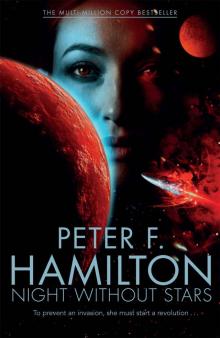 A Night Without Stars
A Night Without Stars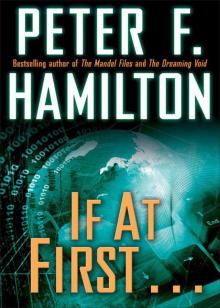 If at First . . .
If at First . . .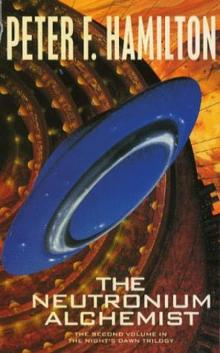 The Neutronium Alchemist
The Neutronium Alchemist Great North Road
Great North Road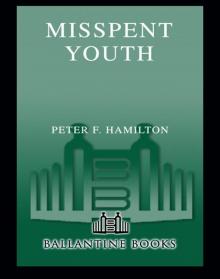 Misspent Youth
Misspent Youth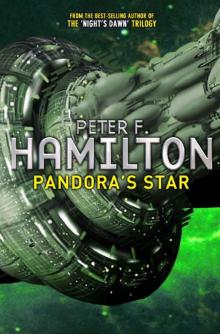 Pandora's Star
Pandora's Star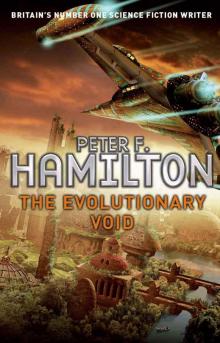 The Evolutionary Void
The Evolutionary Void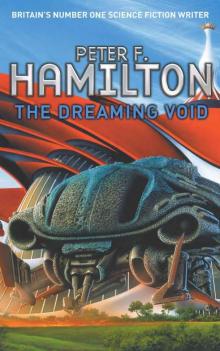 The Dreaming Void
The Dreaming Void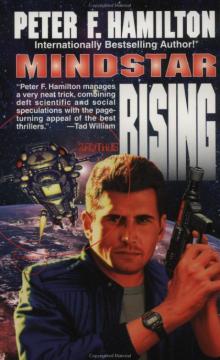 Mindstar Rising
Mindstar Rising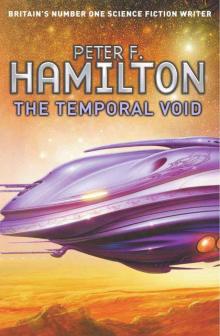 The Temporal Void
The Temporal Void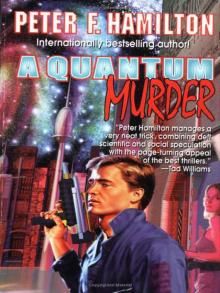 A Quantum Murder
A Quantum Murder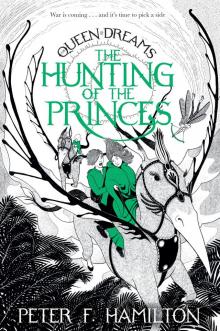 The Hunting of the Princes
The Hunting of the Princes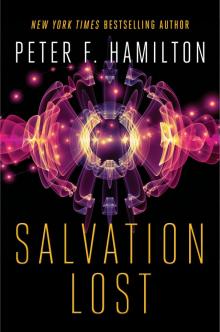 Salvation Lost
Salvation Lost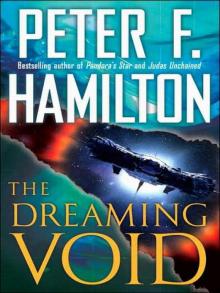 The Dreaming
The Dreaming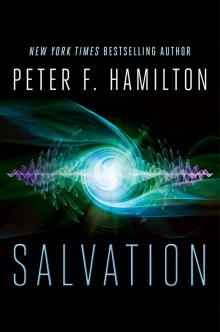 Salvation
Salvation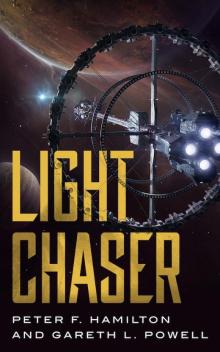 Light Chaser
Light Chaser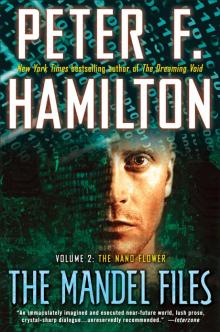 The Mandel Files, Volume 2: The Nano Flower
The Mandel Files, Volume 2: The Nano Flower![The Saints of Salvation [British Ed.] Read online](http://i1.bookreadfree.com/22/the_saints_of_salvation_british_ed__preview.jpg) The Saints of Salvation [British Ed.]
The Saints of Salvation [British Ed.]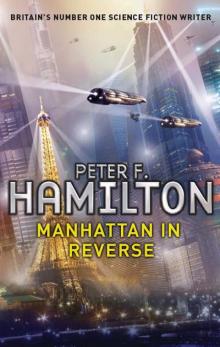 Manhattan in Reverse
Manhattan in Reverse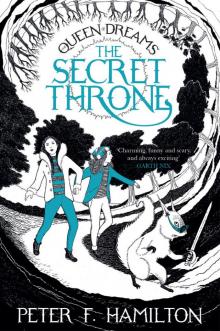 The Secret Throne
The Secret Throne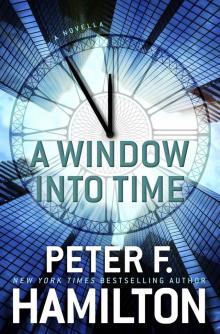 A Window Into Time
A Window Into Time A Second Chance at Eden
A Second Chance at Eden The Nano Flower
The Nano Flower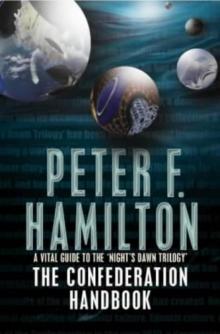 The Confederation Handbook
The Confederation Handbook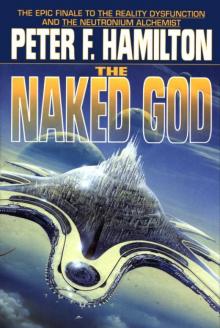 The Naked God
The Naked God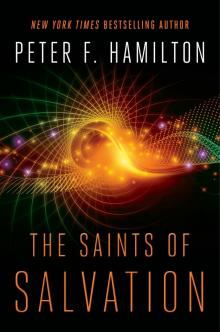 The Saints of Salvation
The Saints of Salvation The Void Trilogy 3-Book Bundle
The Void Trilogy 3-Book Bundle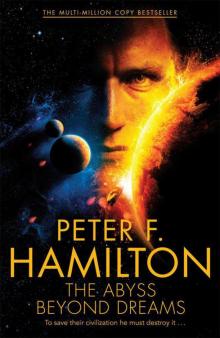 The Abyss Beyond Dreams
The Abyss Beyond Dreams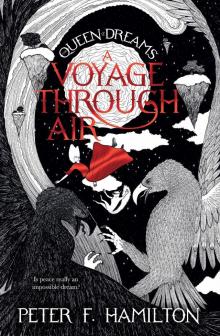 A Voyage Through Air
A Voyage Through Air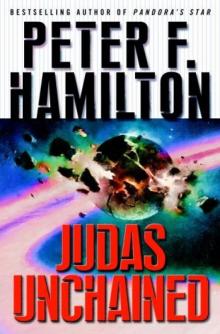 Judas Unchained
Judas Unchained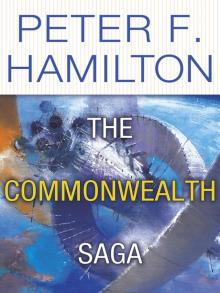 The Commonwealth Saga 2-Book Bundle
The Commonwealth Saga 2-Book Bundle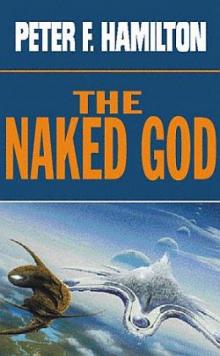 The Naked God - Flight nd-5
The Naked God - Flight nd-5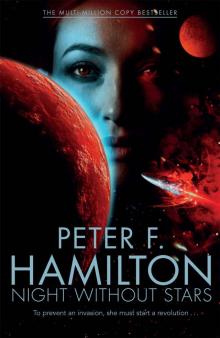 Night Without Stars (Chronicle of the Fallers Book 2)
Night Without Stars (Chronicle of the Fallers Book 2)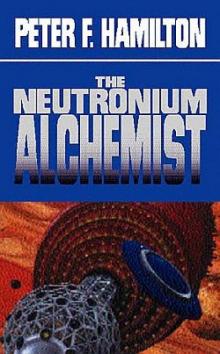 Neutronium Alchemist - Conflict nd-4
Neutronium Alchemist - Conflict nd-4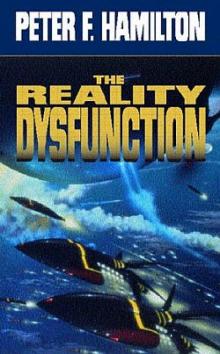 Reality Dysfunction - Expansion nd-2
Reality Dysfunction - Expansion nd-2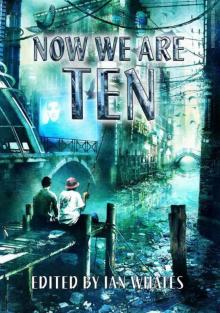 Now We Are Ten: Celebrating the First Ten Years of NewCon Press
Now We Are Ten: Celebrating the First Ten Years of NewCon Press Neutronium Alchemist - Consolidation nd-3
Neutronium Alchemist - Consolidation nd-3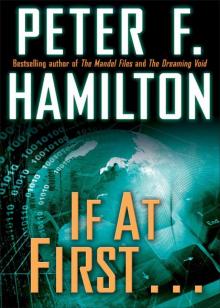 If at First . . . (Short Story)
If at First . . . (Short Story)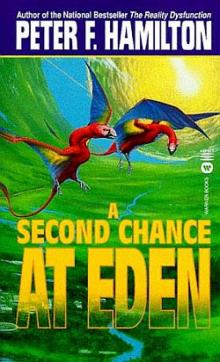 A Second Chance at Eden nd-7
A Second Chance at Eden nd-7 Judas Unchained cs-2
Judas Unchained cs-2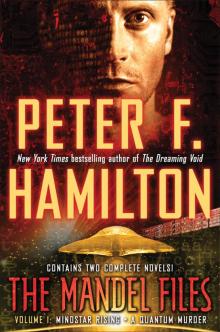 The Mandel Files, Volume 1
The Mandel Files, Volume 1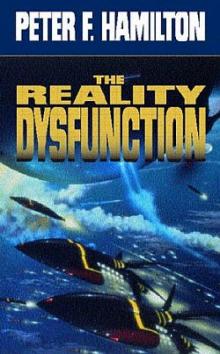 Reality Dysfunction — Emergence nd-1
Reality Dysfunction — Emergence nd-1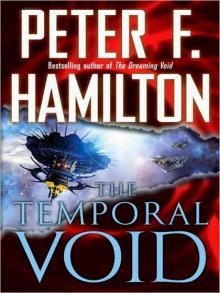 The Temporal Void (ARC)
The Temporal Void (ARC)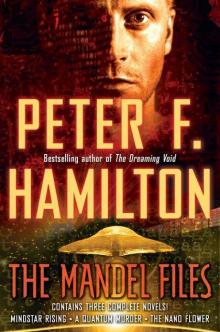 The Mandel Files
The Mandel Files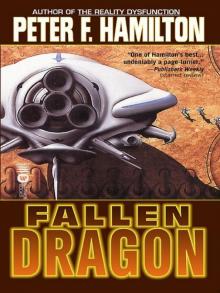 Fallen Fragon
Fallen Fragon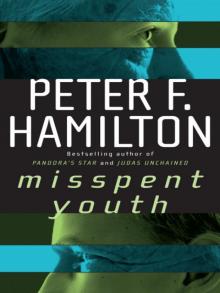 Misspent Youth (commonwealth saga)
Misspent Youth (commonwealth saga)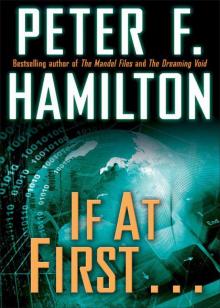 If at First...
If at First... Best of British Science Fiction 2016
Best of British Science Fiction 2016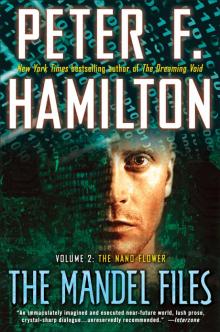 The Mandel Files, Volume 2
The Mandel Files, Volume 2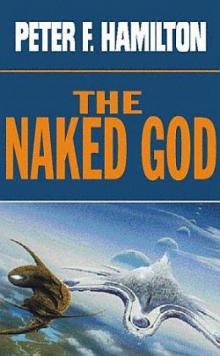 The Naked God - Faith nd-6
The Naked God - Faith nd-6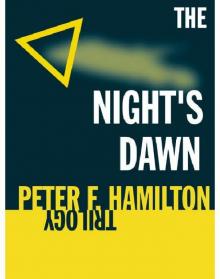 The Night's Dawn Trilogy
The Night's Dawn Trilogy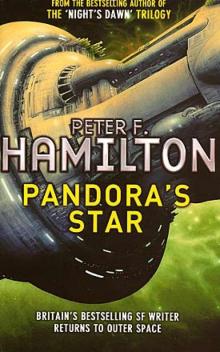 Pandora's Star cs-2
Pandora's Star cs-2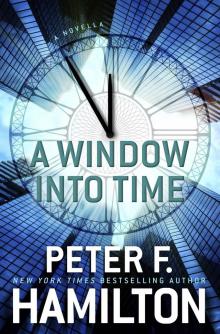 A Window into Time (Novella)
A Window into Time (Novella)